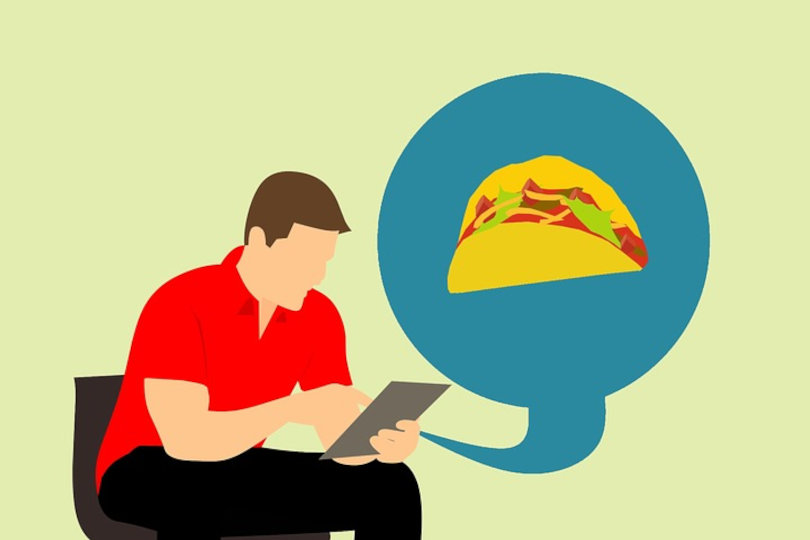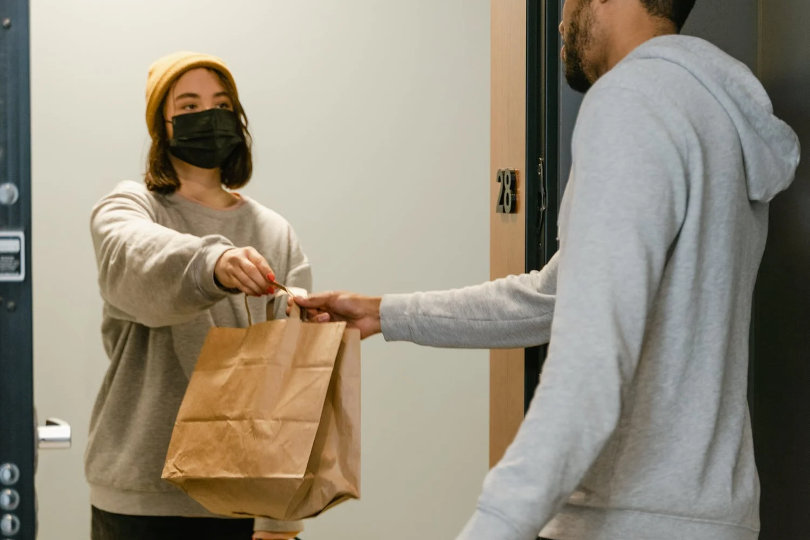If you’re already using an online ordering system to accept delivery orders on your website, you’re on the right track. The next logical move is to take it one step further and design your own branded online ordering app. The article below will go through the main features and functionalities such an app should have.

10 Online Ordering App Design Features & Functionalities
1. Easy to create account
Usually, when users download an app, they appreciate the convenience of creating an account and permanently logging in. Especially when they’re starving and want to order food, customers don’t want to spend time entering their information every time.
Make the process of creating an account/filling out their information as simple as possible. Additionally, give customers the option to save their information for future orders.
2. Instantly visible menu
The essential part of any online ordering app is the menu. That should be highly visible as soon as customers open the app. Ideally, you should add a call-to-action button redirecting to the ordering menu labeled “See Menu & Order” or “Place Order.”
Remember that the primary purpose of your food ordering app is to sell, so less important information like your background or story should take a back seat to the menu.
3. Photos of food
Pictures are what usually draw customers to restaurants or motivates them to order online. Especially in digital menus, photos speak louder than words. So invest in a professional photoshoot for your dishes, and you’ll be able to use the images in several places, such as the app or social media.
As much as you might be tempted to use stock photos, people usually catch on, and you lose credibility and authenticity. Not to mention they’ll be disappointed when they see the actual dish doesn’t look anything like the photo. There are ways of making any dish shine without having to overly-edit the photo or use fake props.
4. Opening hours and contact information
Not as important as the menu, but a close second is ways for people to reach you and the interval when they can do so. Give app users multiple ways to get in touch like phone, email, and even live chat.
As for your schedule, if delivery/pickup hours differ from your regular opening hours (maybe you have a shorter delivery schedule), make that clear in the app. Customers will be disappointed if they start the ordering process only to realize the restaurant is closed at the end.
5. Location tracking
Location tracking is an easy way to simplify the ordering process by automatically pinpointing the customer’s location. Of course, to do that, you first have to ask for their permission to track their location.
Even if you use automatic location, allow users to manually input it or change it if the tracking isn’t exact or they want to add extra information to the address.

6. Clear pricing
Some high-end restaurants don’t include the prices of their menu items on their printed menu. However, especially for an online restaurant menu, it’s best to be as transparent as possible about pricing.
You can, however, use the highly effective menu psychology trick of not including the currency sign and just displaying the numbers. People tend to spend more when there are no dollar signs involved.
7. Feedback/review section
Your online ordering app should also contain a section where customers can leave feedback regarding their order or a review of your restaurant overall. If you are actively asking for reviews, which you should, motivate app users to leave you one by displaying other positive reviews in the app.
The option to leave feedback makes customers feel like they have a voice, even though they may not necessarily want to review your restaurant at that time. They at least know they have the option to whenever they want.
8. Multiple payment options
Speaking of options, another thing that will get you a gold star from customers is allowing them to pay for their order as they wish. From cash or credit card to the driver, online in the app, or via payment providers like Apple Pay, the more options you give, the more satisfied your patrons will be.
When they pay, they should also be able to choose how their order is delivered to them. Some people prefer no-contact delivery, while others want to pick up the order themselves or have someone deliver it to their car.
9. Live support
Live chat and chatbots are on the rise in all sectors of the economy, and the restaurant industry is no exception. If you want your online ordering app to truly shine, implement a live chat support option for customers who prefer to talk to someone directly when there’s an issue with their order.
To streamline the process and take some of the load off your staff, use chatbots for basic answers to simple questions. Then, when a customer wants specific answers, they can choose to be redirected to a staff member.
10. Push notifications
Finally, most apps nowadays use push notifications, and yours should be too. Push notifications can be used for various reasons, from keeping customers informed to collecting data and delivering highly targeted and personalized marketing campaigns.
Don’t forget to ask customers if they want to opt-in for communication and clarify that you will be storing and using their data. Otherwise, you might find yourself breaking confidentiality without even realizing it.
Users have become weary of brands and apps gathering and storing their data, so make your customers feel safe by being transparent about what you’re going to use their information for.
Conclusion
A branded food ordering app can help you stand out from the crowd of restaurants now delivering food. Not only does it give you more creative freedom to represent your brand as you wish, but it also helps increase customer loyalty.
Implement the features and functionalities above to create an online ordering app that will help you sell more food.







